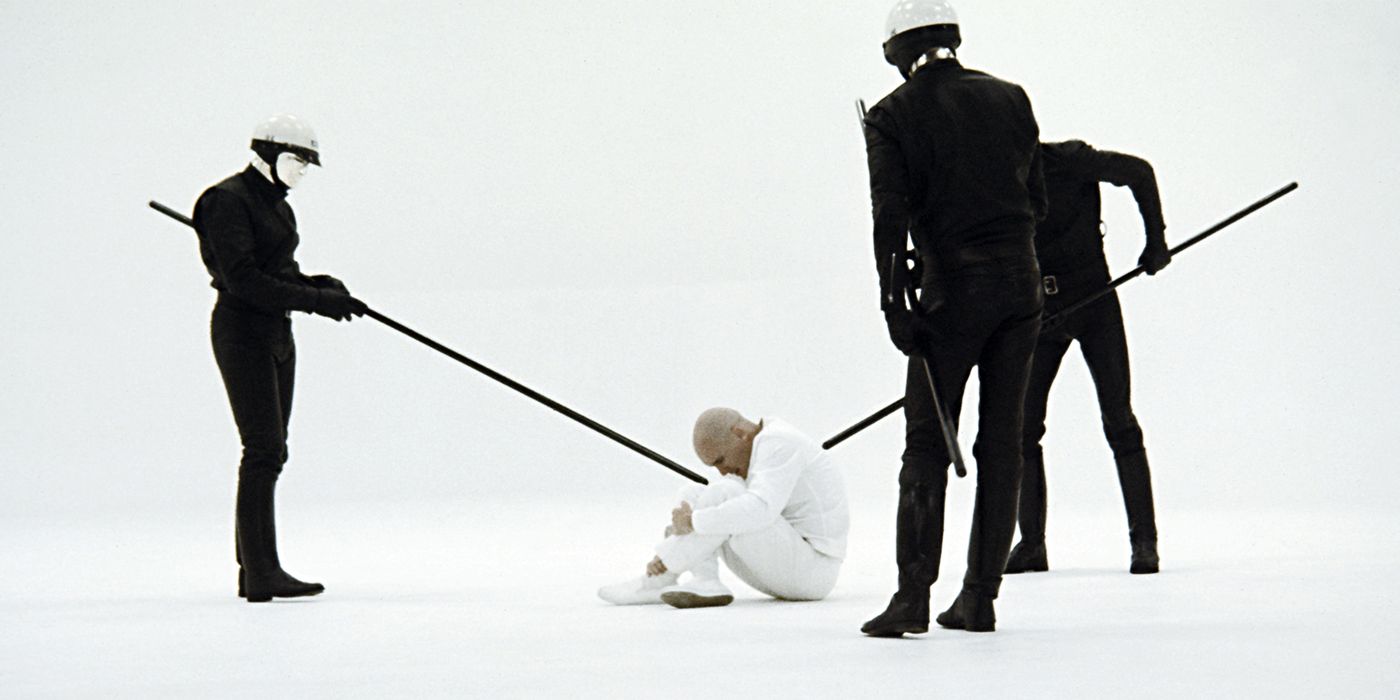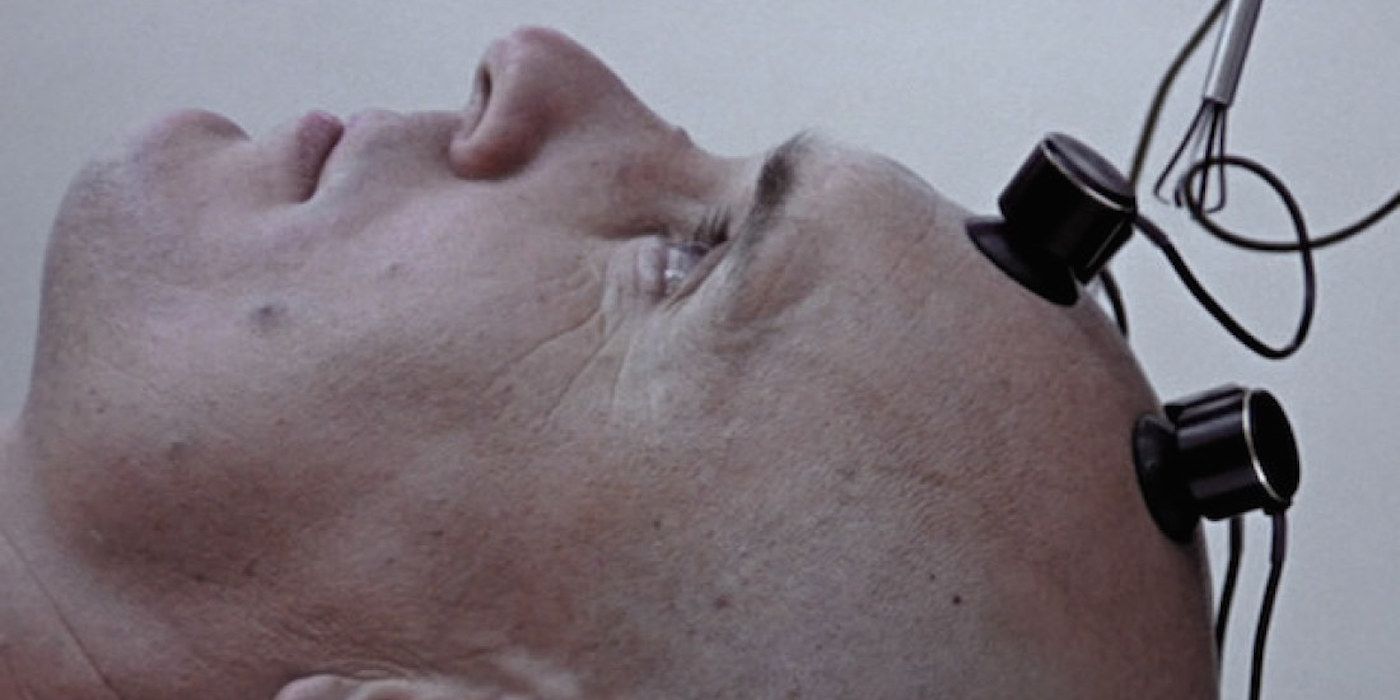Star Wars is George Lucas' most acclaimed achievement, but it owes many of its themes to his directorial debut, THX 1138. More important than the multiple hidden and oblique references to the 1971 movie’s title in Star Wars movies (and the inspiration for his theater sound system THX), thematic elements from his first studio film are echoed throughout the original and prequel trilogies.
THX 1138 was a box office disappointment for Warner Brothers, the beginning and end of their partnership with Francis Ford Coppola’s American Zoetrope, and given that Warner executives had no idea how to market it, Lucas was doubly outraged when they cut five minutes from the finished product, making an already challenging film even more incomprehensible. But a review of the film today reveals many clear themes that Lucas recycled from his dystopian view of the future for use in the Star Wars galaxy, set long ago and far, far away.
The character THX 1138 is in a jail of his own devising after being imprisoned by the state, “trapped in a cage with the door unlocked,” as a commentator posits in a documentary included with the George Lucas Director’s Cut DVD. Similarly, in Star Wars, Luke Skywalker is trapped on Tatooine only because of an agreement with his uncle to work the farm for another season before joining the Rebellion. “The only barrier is your own blindness,” THX thinks (in the Ben Bova novelization). Similarly, Obi-Wan Kenobi tells Luke that “Your eyes can deceive you—don’t trust them” as he attempts lightsaber training while wearing a helmet with the blast shield down, obscuring his vision.
That “trapped but not trapped” theme arises again in Star Wars: Episode III - Revenge of the Sith, with Anakin Skywalker believing he must embrace the dark side of the Force to save Padmé Amidala’s life, although it is not in danger until Anakin himself Force chokes her (forbidden love being another theme in common with THX 1138). These are psychological prisons, but they are prisons just the same. Dale Pollock writes in his biography of Lucas, Skywalking, that the “major theme in Star Wars, as in every Lucas film, is the acceptance of personal responsibility, the fact that you can’t run away from your fate.” The director himself followed his fate by moving away from his small, hot hometown of Modesto, California, refusing to run his father’s business and pursued his dream
Another theme shared between THX 1138 and the Star Wars films is the cold authoritarian state’s dominance being powered by technology. The “technological terror” of the Death Star, as Darth Vader calls it, is the ultimate symbol of the Empire’s reliance on technology to suppress the free will of its subjects. From the ubiquitous clone-like Stormtroopers in A New Hope to the actual clone troopers in Star Wars: Episode II - Attack of the Clones and Revenge of the Sith to the seemingly infinite number of Trade Federation droids activated on Naboo in Star Wars: Episode I - The Phantom Menace, all of Lucas’ Star Wars movies pulsate with the notion that the state uses technology to maintain control. THX 1138 also has robots used by the state, who do as they are commanded, whether it be to seek out non-compliant citizens, torture, or escort them to be interrogated and imprisoned or destroyed. THX assembles these robots, and given that the workers of this city/state are “programmed” via pills they are told to take and voices broadcast throughout their world, they are virtually “machines making machines” as C-3PO calls the assembly line he sees on Geonosis in Attack of the Clones.
From the reverse crawl that begins THX 1138 to the “futuristic but also lived in” set design to the climactic high-speed pursuit, there are many similarities between Lucas’ theatrical debut and the original and prequel Star Wars trilogies. In the notes for the Director's Cut DVD release of THX 1138, Lucas wrote that the film was "a metaphor for the way we're living,” and reflected “fears and concerns” about “a shift away from creativity and individual achievement and towards a corporate, consumerist mentality.” These themes recurred throughout Lucas’ Star Wars movies, although in a more subtle and fun way, as the creative, organic, free-will approach of the Rebellion destroys the technological suppression of the Empire.


